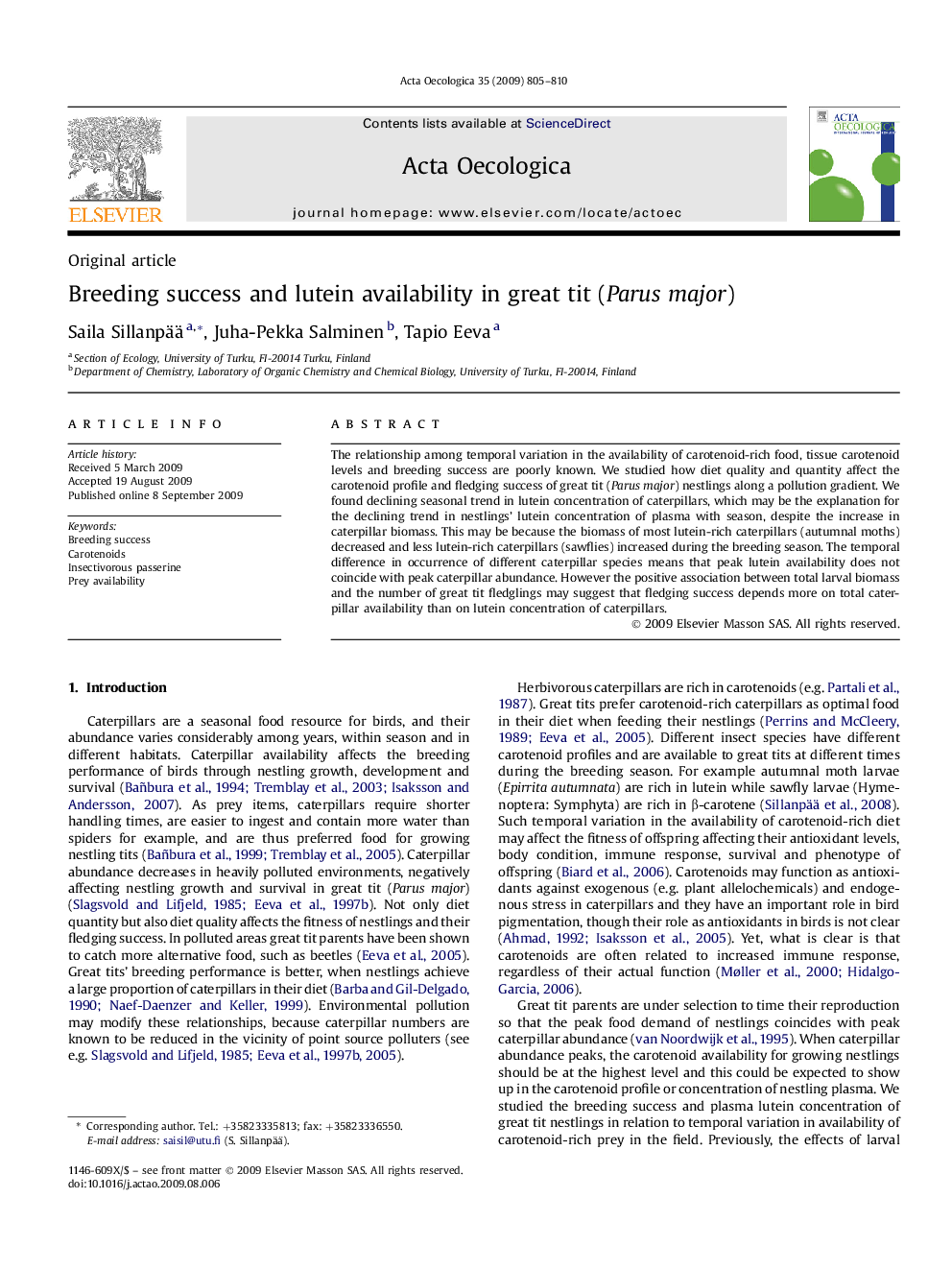| Article ID | Journal | Published Year | Pages | File Type |
|---|---|---|---|---|
| 4381135 | Acta Oecologica | 2009 | 6 Pages |
Abstract
The relationship among temporal variation in the availability of carotenoid-rich food, tissue carotenoid levels and breeding success are poorly known. We studied how diet quality and quantity affect the carotenoid profile and fledging success of great tit (Parus major) nestlings along a pollution gradient. We found declining seasonal trend in lutein concentration of caterpillars, which may be the explanation for the declining trend in nestlings' lutein concentration of plasma with season, despite the increase in caterpillar biomass. This may be because the biomass of most lutein-rich caterpillars (autumnal moths) decreased and less lutein-rich caterpillars (sawflies) increased during the breeding season. The temporal difference in occurrence of different caterpillar species means that peak lutein availability does not coincide with peak caterpillar abundance. However the positive association between total larval biomass and the number of great tit fledglings may suggest that fledging success depends more on total caterpillar availability than on lutein concentration of caterpillars.
Related Topics
Life Sciences
Agricultural and Biological Sciences
Ecology, Evolution, Behavior and Systematics
Authors
Saila Sillanpää, Juha-Pekka Salminen, Tapio Eeva,
